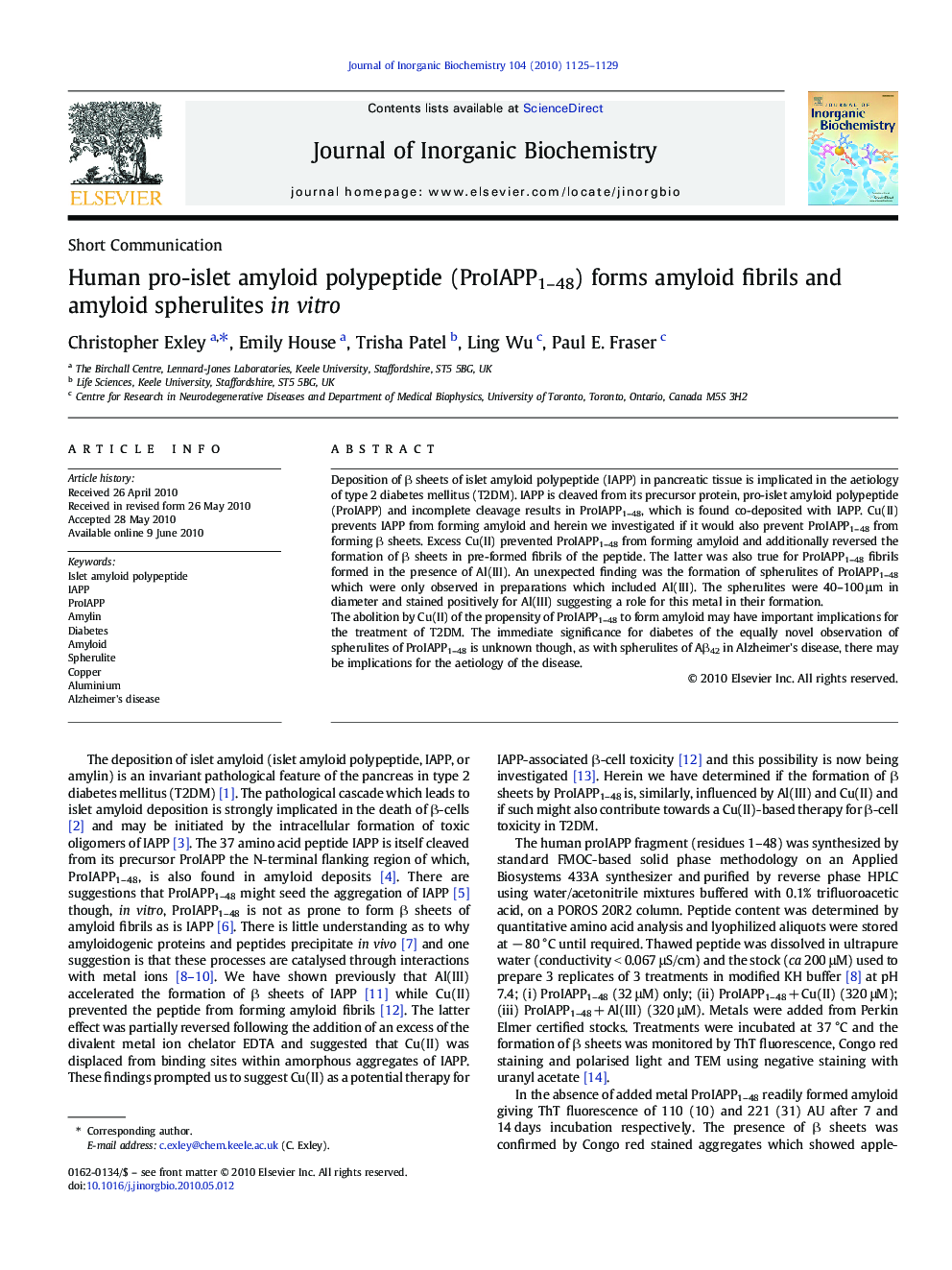| Article ID | Journal | Published Year | Pages | File Type |
|---|---|---|---|---|
| 1317957 | Journal of Inorganic Biochemistry | 2010 | 5 Pages |
Deposition of β sheets of islet amyloid polypeptide (IAPP) in pancreatic tissue is implicated in the aetiology of type 2 diabetes mellitus (T2DM). IAPP is cleaved from its precursor protein, pro-islet amyloid polypeptide (ProIAPP) and incomplete cleavage results in ProIAPP1–48, which is found co-deposited with IAPP. Cu(II) prevents IAPP from forming amyloid and herein we investigated if it would also prevent ProIAPP1–48 from forming β sheets. Excess Cu(II) prevented ProIAPP1–48 from forming amyloid and additionally reversed the formation of β sheets in pre-formed fibrils of the peptide. The latter was also true for ProIAPP1–48 fibrils formed in the presence of Al(III). An unexpected finding was the formation of spherulites of ProIAPP1–48 which were only observed in preparations which included Al(III). The spherulites were 40–100 μm in diameter and stained positively for Al(III) suggesting a role for this metal in their formation.The abolition by Cu(II) of the propensity of ProIAPP1–48 to form amyloid may have important implications for the treatment of T2DM. The immediate significance for diabetes of the equally novel observation of spherulites of ProIAPP1–48 is unknown though, as with spherulites of Aβ42 in Alzheimer's disease, there may be implications for the aetiology of the disease.
Graphical abstractAmyloid formation by ProIAPP1–48 is abolished by Cu(II) while Al(III) induces the formation of spherulites.Figure optionsDownload full-size imageDownload as PowerPoint slide
